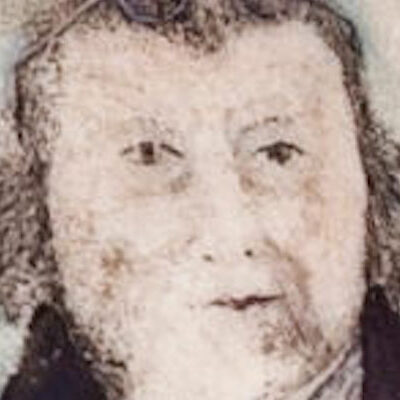
Oakland is a section of the city of Pittsburgh comprising the four city neighborhoods of North Oakland, Central Oakland, South Oakland, and West Oakland.
Oakland developed as a civic and cultural center in the late 19th and early 20th century with the construction of Bigelow Bouelvard (originally Grant Boulevard), the establishment of cultural institutions including the Carnegie Institute, the Hotel Schenley, and Phipps Conservatory, and development of the Schenley Farms residential district. In the early 20th century, the University of Pittsburgh and Carnegie Technical Schools (now Carnegie Mellon University) both began expanding their campuses in the Oakland area. The opening of the first section of the Boulevard of the Allies in 1922 created a quick commuter link between the southern half of Oakland and the downtown business district. The extension of the roadway in 1930 carried the Boulevard of the Allies into Squirrel Hill.
Oakland was home to the earliest Jewish settlement in Western Pennsylvania in the 1770s, when Mordecai Moses and Tziporah Mordecai briefly operated a distillery and tavern near the current site of the Cathedral of Learning. Subsequent settlement in the mid-19th century was located in the city center. As the Jewish population of Pittsburgh migrated eastward from the city center in the early 20th century, Oakland became an important meeting place for a Jewish community spread across the Hill District, the East End, Squirrel Hill, and the emerging South Hills.
The first wave of Jewish communal activity in Oakland started in 1906-1907, when the two oldest Jewish congregations in the city left the downtown core to build large new synagogues at opposite ends of Oakland: Rodef Shalom Congregation on Fifth Avenue and Tree of Life Congregation on Craft Avenue. These two synagogues assumed regional importance, drawing members from a wide area and serving as meeting places for regional communal initiatives. Rodef Shalom remains in the area, while Tree of Life relocated to Squirrel Hill in 1952.
A second wave began in the late 1910s, when some Jewish families leaving the Hill District began settling south of Wilmot Street, which later became the Boulevard of the Allies. The neighborhood is known today as South Oakland. Topography splits South Oakland into distinct enclaves, especially along Bates Street. A group of Jewish families east of Bates Street formed Adath Israel Congregation as early as 1921. They met in private homes until 1924, when they converted a house at 3257 Ward St. into a synagogue and subsequently became known colloquially as “The Ward Street Shul.”
A different group of Jewish families settled west of Bates Street, in a section sometimes called Oakcliffe. They started Ohave Zedeck Congregation sometime between 1917 and 1921, according to various accounts. Ohave Zedeck purchased at house at 356 Craft Ave. on the corner of Niagara Street in 1921 and converted it into a synagogue. In a major renovation in 1936 and 1937, Ohave Zedeck demolished and rebuilt most of the street-level structure to expand its sanctuary and to convert the basement into a social hall.
With increasing outmigration from the Hill District throughout the 1920s and 1930s, several Jewish institutions relocated to Oakland. Kahal Chassidim moved to 33 Niagara St. in 1932, and Anshe Lubovitz Congregation moved to 3223 Kennett Sq. in 1944.
Throughout the 1920s, the Upper Hill District (also known as Sugartop, Herron Hill, and Schenley Heights) also experienced an increase in its Jewish population. Although separated from Oakland by a steep change in elevation, the two neighborhoods were connected by several sets of city steps and both fed into Schenley High School, creating many opportunities for interchange. Agudath Achim Congregation was located on upper Wylie Avenue and on Herron Avenue throughout the 1920s. Kehilath Jeshurun Congregation existed on Anaheim Street from 1929 into the late 1940s.
Throughout the middle decades of the 20th century, Oakland remained a convenient meeting place for a Jewish population spread across many different parts of the city. The neighborhood attracted several communitywide institutions, including the new Montefiore Hospital, the YM&WHA, the community mikveh (ritual bath), and the first Jewish day school facilities in the city, as well as Jewish college student organizations such as Hillel-JUC and Chabad House.
In these years, though, the Jewish population increasingly migrated to the East End and Squirrel Hill. Kahal Chassidim moved to Squirrel Hill in 1939. Anshe Lubovitz closed in the late 1940s or early 1950s and evolved into the emerging Lubavitch community. Tree of Life Congregation briefly operated a “Squirrel Hill annex” in the mid-1930s and later dedicated a new synagogue in Squirrel Hill in 1952, selling its Oakland synagogue to the Pittsburgh Playhouse. Ohave Zedeck Congregation closed sometime after 1975, and Adath Israel Congregation closed in 1993.
Even after these local synagogues closed, Oakland has retained a sizable Jewish population thanks to its student population and to the construction of condos along Bellefield Avenue, Dithridge Street, Craig Street, and Neville Avenue in North Oakland.